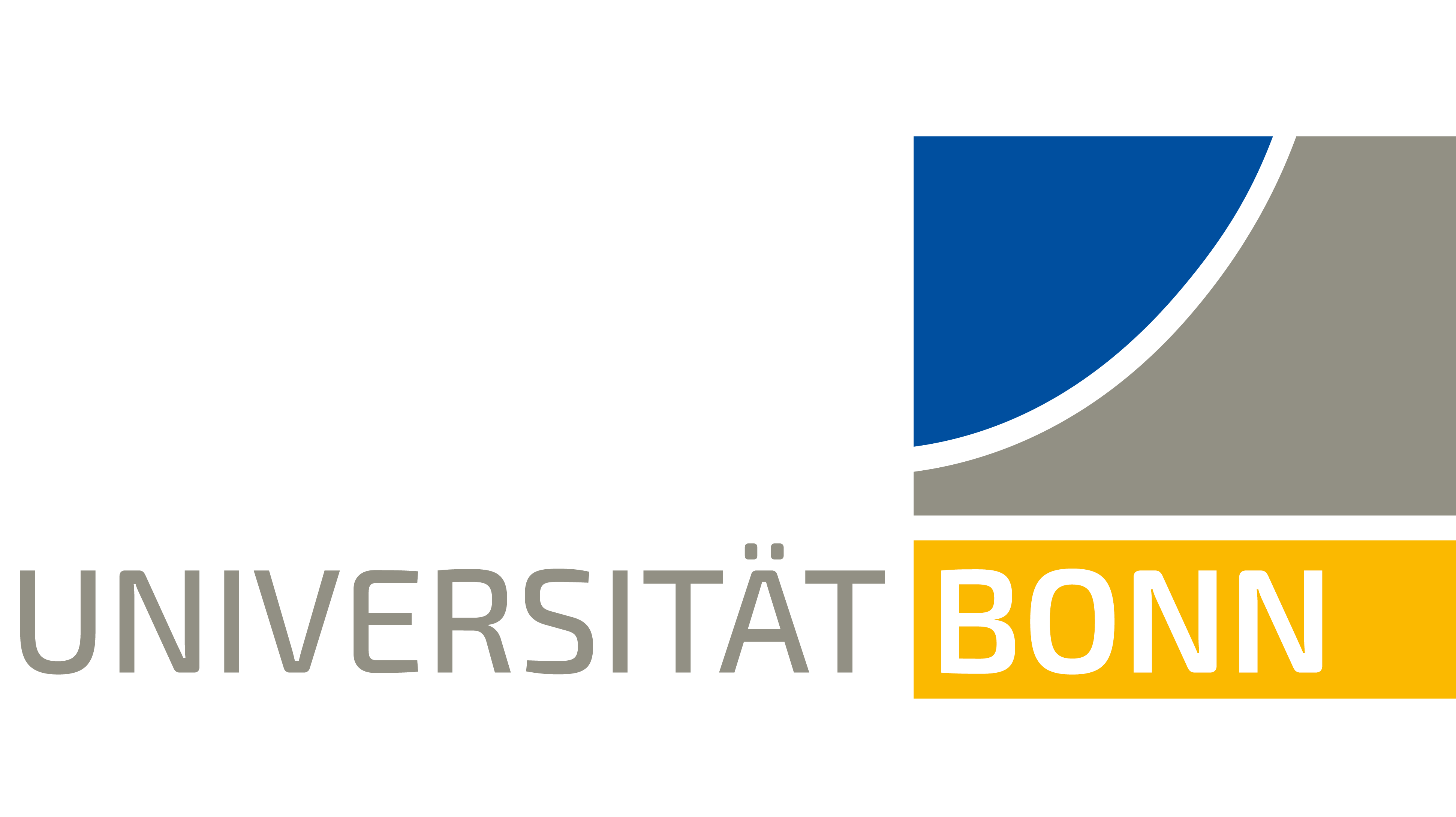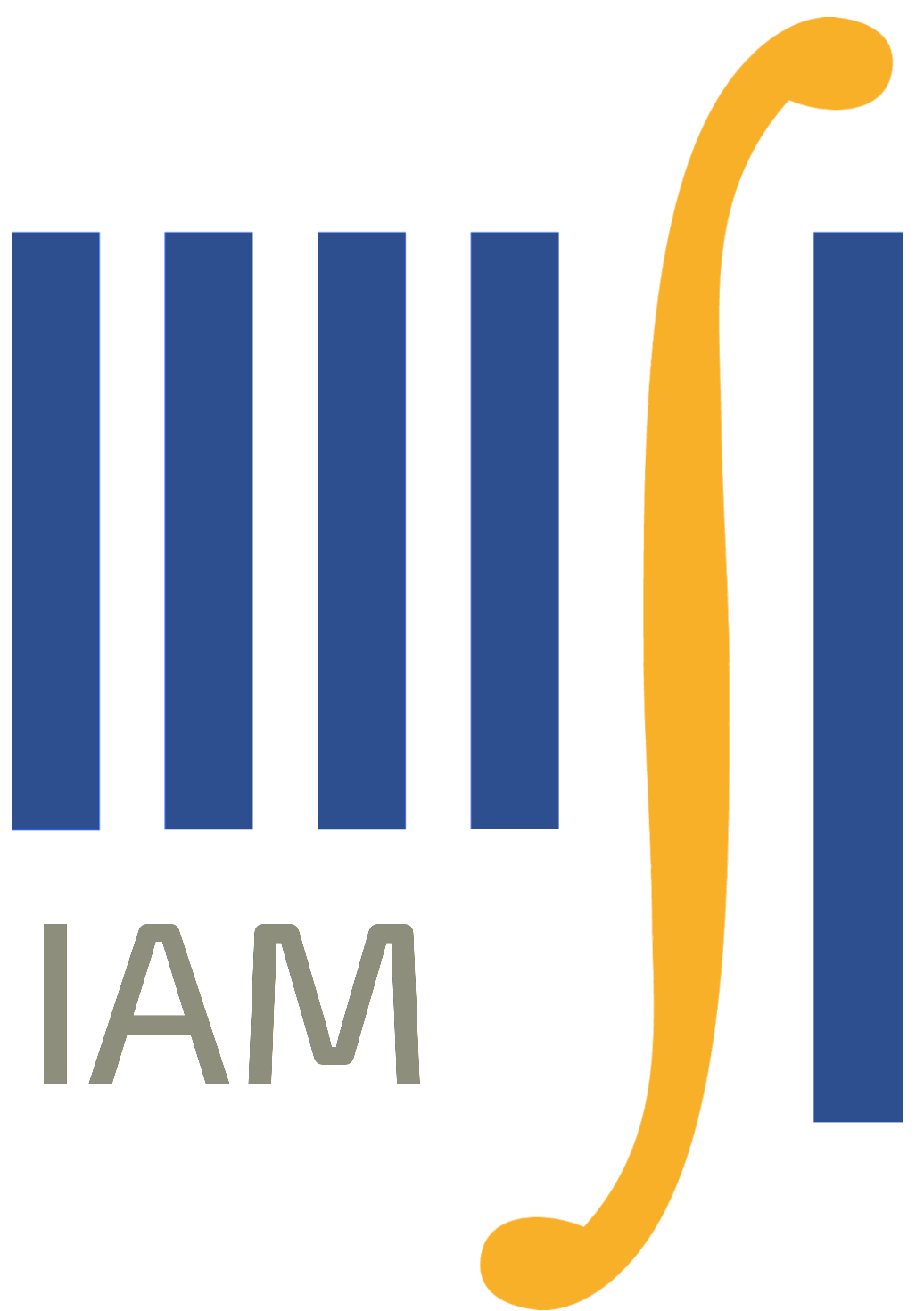Oberseminar Analysis Winter 2021
Organizers: S. Conti, H. Koch, S. Müller, B. Niethammer, M. Rumpf, C. Thiele, J.J.L. Velázquez, D. Alonso-Orán
- Thursday, March 10 at 14:15 Lipschitz Saal, Anna Skorobogatova (Princeton University) Interior regularity of area-minimizing currents with high codimension Integral currents are a weak generalization of smooth oriented manifolds with boundary and provide a natural setting in which to study the Plateau problem: ‘what are the surfaces of least m-dimensional area that span a given (m-1)-dimensional boundary?’ However, the weak nature of integral currents permit the formation of singularities. The problem of determining the size and structure of the interior singular set of an area-minimizer in this setting has been studied by many since the 1960s, with many ground-breaking contributions. The codimension one case is significantly easier to handle, but in the higher codimension case, much less progress has been made since the celebrated (m-2)-Hausdorff dimension bound on the singular set due to Almgren, the proof of which has since been simplified by De Lellis and Spadaro. In this talk I will review the key features of Almgren’s approach and discuss how to strengthen this to an upper Minkowski dimension estimate. I will also explain how one might hope to better understand the structure of the singular set in high codimension. This is based on work in progress with Camillo De Lellis (IAS).
- Thursday, February 17 at 14:15 Lipschitz Saal, Helmut Abels (Universität Regensburg) On the Sharp Interface Limits of a Navier-Stokes/Allen-Cahn System We consider the sharp interface limit of a Navier-Stokes/Allen-Cahn system, when a parameter $\epsilon>0$ that is proportional to the thickness of the diffuse interface tends to zero, in a two dimensional bounded domain. In dependence on the mobility coefficient in the Allen-Cahn equation in dependence on $\epsilon>0$, different limit systems can occur. First we discuss this briefly on a formal level using the method of formal matched asymptotic expansions. In the case that the mobility is independent we present a recent result in which we prove convergence of the solutions of the Navier-Stokes/Allen-Cahn system to solutions of a sharp interface model, where the interface evolution is given by the mean curvature equation with an additional convection term coupled to a two-phase Navier-Stokes system with an additional contribution to the stress tensor, which describes the capillary stress. To this end we construct a suitable approximation of the solution of the Navier-Stokes/Allen-Cahn system. To this end a new Ansatz based on partial linearization in highest order is used, which simplifies the analysis compared to previous results. Then the difference of approximate and exact solution is estimated with the aid of a suitable spectral estimate of the linearized Allen-Cahn operator. This is a joint work with Mingwen Fei from Anhui Normal University, China.
- Thursday, January 20 at 14:00! Lipschitz Saal, Gianluca Favre (Department of Information Engineering, Computer Science and Mathematics University of L'Aquila) Hypocoercivity and reaction-diffusion limit for a nonlinear generation-recombination model A reaction-kinetic model for a two-species gas mixture undergoing pair generation and recombination reactions is considered on a torus. For dominant scattering with a non-moving constant-temperature background the macroscopic limit to a reaction-diffusion system is carried out. Exponential decay to equilibrium is proven for the kinetic model by hypocoercivity estimates. This seems to be the first rigorous derivation of a nonlinear reaction-diffusion system from a kinetic model as well as the first hypocoercivity result for a nonlinear kinetic problem without smallness assumptions. The analysis profits from uniform bounds of the solution in terms of the equilibrium velocity distribution.
- Thursday, January 13 at 14:15 Lipschitz Saal, Kerrek Hatfield Stinson (Bonn University) Some Existence Results for a Cahn-Hilliard Variational Model for Lithium-Ion Batteries In this talk, we recall the Cahn-Hilliard Reaction model for lithium-ion batteries. This model incorporates Butler-Volmer Kinetics, for electrochemical consistency, via a nonlinear flux for the chemical potential. Using variational methods, we obtain existence of solutions for the model in the case of a nonlinearity with polynomial growth. However this approach fails to account for exponential growth of the flux, as in the physical model. This leads us to introduce a fixed point argument to prove short-time existence for fluxes with exponential growth in the physically relevant 3-dimensional space.
- Thursday, October 28 at 2:15 pm, Prof. Dr. Marius Lemm (Universität Tübingen) Discrete Green's functions and optimal Hardy weights We consider elliptic, divergence-form operators on Z^d with random coefficients. Building on a novel perturbative approach to homogenization theory due to Bourgain, we derive an asymptotic expansion of the annealed (=averaged) Green’s function and its first (d+1) derivatives at large distances. As a corollary, we show that derivatives up to order d+1 behave like those of the standard Laplacian. In the second part of the talk, we discuss how Green’s function estimates from homogenization theory can be used to estimate Hardy weights. We prove that, after suitable averaging, the optimal Hardy weight has the familiar inverse-square behavior at large distances. Joint work with Matthias Keller.
- Thursday, November 4 at 17:00 pm streamed in Room 2.040 , Marina Chugunova (Claremont Graduate University) Motion of Liquid Films in the Gas Channels Catalysts are usually made of a dense but porous material such as activated carbon, zeolites, etc. that provide a large surface area. Liquids that are produced as a by-product of a gas reaction at the catalyst site transport to the surface of the porous material, slowing down transport of the gaseous reactants to the catalyst active site. Understanding the dynamics of the liquid films in the gas channel is critical to maintain performance and durability of the catalyst assembly. We develop a mathematical model for liquid films dynamics and study different regimes.


